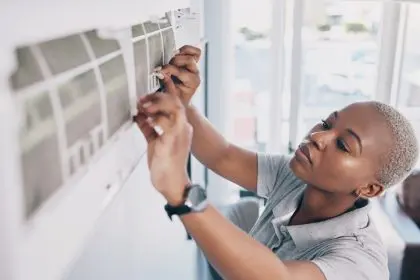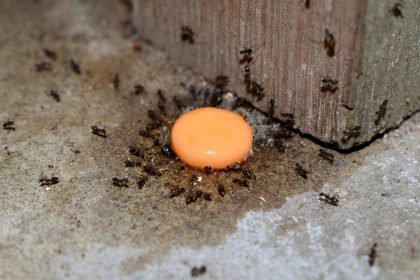Bed bugs are a homeowner’s worst nightmare. These tiny, elusive pests can infest even the cleanest homes, leading to sleepless nights and stress. Despite their size, bed bugs are incredibly resilient and can latch onto almost anything to hitch a ride back to your living space. The emotional toll of discovering bed bugs can be significant — feelings of anxiety, disgust and even embarrassment can quickly take hold. Understanding how these pests infiltrate your home is crucial to preventing an infestation. This article explores five common ways bed bugs might find their way into your house, offering tips on how to protect yourself and your family from these unwelcome guests.
1. Traveling and staying in hotels
Travel is one of the most common ways to bring bed bugs home. Hotels, motels and hostels — regardless of their cleanliness — can harbor these pests. Bed bugs are notorious hitchhikers and can easily cling to luggage, clothing and personal items.
When staying in a hotel, be on the lookout for signs of bed bugs, such as tiny blood stains on sheets or small dark spots (bed bug feces) on the mattress seams. Even luxury hotels can fall victim to bed bug infestations due to the high turnover of guests.
To reduce the risk, inspect the bed and surrounding areas as soon as you enter your room. Avoid placing your suitcase on the bed or floor; instead, use a luggage rack. When you return home, wash and dry your clothes on high heat to kill any potential stowaways. This extra step can be the difference between a peaceful home and a bed bug outbreak.
2. Buying used furniture
Secondhand shopping is a great way to save money and find unique items, but it also comes with risks. Bed bugs can hide in the crevices of used furniture, especially in beds, couches and upholstered chairs.
Before purchasing, carefully inspect used furniture for signs of bed bugs. Look for reddish-brown spots, small eggs or live bugs in the seams, cushions and joints of the furniture.
If you’re unsure about the furniture’s history, it’s safer to skip it. However, if you decide to bring used furniture into your home, treat it with a bed bug spray or consider having it professionally cleaned before use. Taking this precautionary measure can save you from the emotional distress of a bed bug infestation.
3. Public transportation
Buses, trains and even airplanes can be hotspots for bed bugs. These pests can attach themselves to your clothing or bags when you sit on infested seats — unknowingly bringing them back to your home.
Bed bugs are small and good at hiding, so you might not notice them right away. Pay attention to any unexplained bite marks on your skin after using public transportation.
To minimize risk, avoid placing bags or coats on the ground or seats of public transportation. Keep your belongings close and avoid unnecessary contact with surfaces. Once home, inspect your clothing and bags for any signs of bed bugs, and consider washing travel items if you suspect exposure.
4. Visitors and houseguests
Sometimes, bed bugs come into your home through visitors. Friends, family or guests may unknowingly carry bed bugs on their clothing, luggage or personal items.
After having houseguests, be vigilant for signs of bed bugs. Check areas where guests slept or placed their belongings for any unusual signs.
Politely ask guests to place their luggage on hard surfaces — like the floor — rather than on your bed or furniture. After guests leave, thoroughly clean and vacuum the areas they used. It might feel awkward to take these steps, but it’s essential for keeping your home safe. Preventing an infestation is far less stressful than dealing with the aftermath.
5. Shared laundry facilities
Bed bugs can also spread through shared laundry facilities in apartment complexes, dormitories or laundromats. These pests can survive in the seams of hampers, laundry bags and even on clothing if not washed and dried properly.
If you notice small bites on your skin after using a shared laundry facility, bed bugs might be the culprit. Watch for any bugs in your laundry hamper or on your clothing.
When using shared laundry facilities, transport your clothes in a sealed bag. Wash and dry your clothes on the highest heat setting to kill any bed bugs that may have hitched a ride. Avoid folding clothes in the facility; instead, bring them home to fold in a safe environment.
Vigilance and proactive measures
Preventing bed bugs from invading your home requires vigilance and proactive measures. The emotional impact of dealing with an infestation can be overwhelming, leading to anxiety, embarrassment and significant financial costs. By being aware of the ways bed bugs can enter your home, you can take steps to reduce the risk of an infestation. Whether you’re traveling, shopping for secondhand furniture, using public transportation, hosting guests or using shared laundry facilities, following these prevention tips can help you maintain a bed bug-free home. Remember, it’s easier to prevent these pests from entering your living space than it is to eliminate them once they’ve settled in. Protect your peace of mind and your home by staying informed and vigilant.















